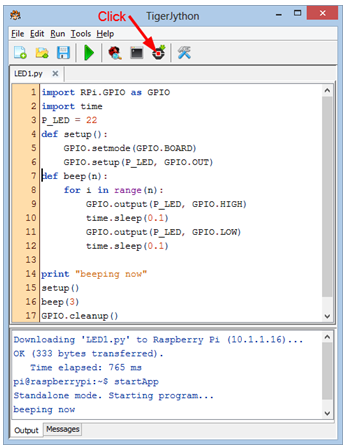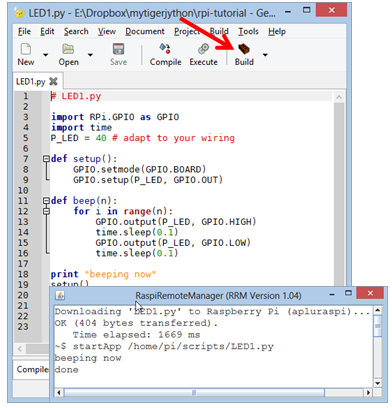| Python Exemplary |
COMPUTER SCIENCE WITH MICROPROCESSORS
![]()
Microprocessors Are Everywhere |
An increasing number of machines in modern life is controlled by microprocessors (also called microcontrollers) to increase flexibility, reduce electric and mechanical components and to provide some kind of machine intelligence. The basic architecture of microprocessors is roughly the same for all computing machines, from small embedded controllers to communication devices and desktop computers. All of them are programmed using a programming language and almost all programs are written by humans. To know about programming concepts is essential for constructing modern machines and understand how they function. |
Microprocessor Programming Is Cool |
Learning programming with microprocessors is very motivating. These small and cheap systems look like toys, but behave like real computers. And they interact with the real world with sensors detecting physical quantities like luminosity, color, pressure, temperature, etc., and they control actuators like motors, lamps, valves, etc. by the program logic. There is more action and fun to observe how real world quantities influence the behavior of the system than sitting on a computer screen and handling keyboard and mouse. Since a few years, programming microprocessors has become a hobby for many people around the world, not only for nerds, by reason of two widespread systems: the Arduino and the Raspberry Pi. |
Microprocessors to Learn Basic Concepts of Computer Science |
You can learn basic concepts of programming and electronic interfacing with both systems. But with Arduino you are limited to C/C++ (and some educational languages like Scratch), while with the Raspberry Pi the world is open for all kind of computing activity, including installation and handling of the Linux operating system. Moreover the C++ implementation on Arduino is poor due to restricted computer resources. So with Arduino there is a danger that you acquire a bad, old-fashioned programming style. On the other hand the main programming language for the Raspberry Pi is Python, a widely accepted language for the introduction of programming concepts. Since our aim is not only to play around with some computing and electronic gadgets, but to teach the fundamental concepts of computer science, we like the Raspberry Pi that let the door widely open for the technological progress and your personal evolution |
Microprocessors Across the Curriculum |
In many projects, the microprocessor acquires data from the external world through sensors. There are many different sensors for all kind of physical quantities. The understanding of their functioning is part of the physical science and an interesting subject per se. The data from the sensor is then transferred to the microprocessor as electrical signal (a voltage) using electronic components. To understand how they function and how the parts are wired in a electronic circuit require at least a basic know-how of electronic engineering. Finally because the whole system is controlled by a program, fundamental concepts of program design and implementation must be known. Treating with microprocessor systems is really an interdisciplinary adventure. |
Learning With Your Head, Heart and Hands |
(Johann Heinrich Pestalozzi, Swiss pedagogue and educational reformer) To make your microprocessor system run successfully, you must obviously have a clear mind, but also lifeblood and energy to overcome difficulties - and finally you have to be a gifted craftsman to assemble and wire the electronic and mechanic components. |
|
|
One-Click-Ausführung, Remote Development |
|
|

